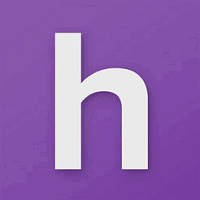Description

HRnet

KServeHRMS
Comprehensive Overview: HRnet vs KServeHRMS
Here’s a comprehensive overview of HRnet and KServeHRMS, focusing on their primary functions, target markets, market share, user base, and key differentiating factors:
a) Primary Functions and Target Markets
HRnet
Primary Functions:
- Human Resource Management: HRnet offers core HR functionalities like employee data management, payroll processing, and benefits administration.
- Talent Management: Includes features such as recruitment, onboarding, performance appraisal, and learning management.
- Workforce Management: Time and attendance tracking, shift scheduling, and workforce analytics.
- Compliance and Reporting: Tools for compliance audits and generating HR reports.
Target Markets:
- Small to Medium Enterprises (SMEs): Primarily targets SMEs due to its scalable nature.
- Various Industries: Suitable for companies in manufacturing, retail, healthcare, and more.
KServeHRMS
Primary Functions:
- Comprehensive HR Solutions: Offers modules covering HR administration, recruitment, performance management, and payroll.
- Self-Service Portal: Empowers employees with self-service options for leave management, claims, and profile updates.
- Analytics and Reporting: Provides advanced HR analytics for data-driven decision-making.
- Integration Capabilities: Seamlessly integrates with other enterprise solutions for holistic management.
Target Markets:
- Medium to Large Enterprises: Particularly targets larger corporations needing a comprehensive, integrated HR solution.
- Diverse Sectors: Deploys across various sectors including IT, finance, education, and healthcare.
b) Market Share and User Base
-
HRnet:
- Market Share: HRnet typically holds a significant share in the SME segment but might have a smaller share compared to large Enterprise Resource Planning (ERP) solutions in bigger organizations.
- User Base: Enjoys a broad user base primarily in regions or industries where SMEs are predominant.
-
KServeHRMS:
- Market Share: More prevalent in larger organizations, especially those that require more sophisticated HR and payroll solutions.
- User Base: Has a robust user base across multiple industries that require complex HR functionality and integration.
c) Key Differentiating Factors
-
Scalability and Integration:
- HRnet: Offers a modular approach that is easily scalable as a business grows, making it an attractive option for growing SMEs.
- KServeHRMS: Focuses on seamless integration with existing systems, offering an enterprise-grade solution for complex HR and payroll needs.
-
User Experience and Customization:
- HRnet: Provides a user-friendly interface with customizable features suited for smaller teams looking for quick deployment.
- KServeHRMS: Offers extensive customization and configuration options to meet the unique needs of large enterprises.
-
Pricing Model:
- HRnet: Generally offers competitive pricing favorable to small and medium-sized businesses.
- KServeHRMS: Pricing aligns with its comprehensive feature set and is often structured to suit larger organizations with more complex needs.
-
Global Reach and Support:
- HRnet: May have a more regional focus and potentially limited support outside primary markets.
- KServeHRMS: Often provides broader support networks, including international clients, ensuring robust customer service and support.
Understanding these elements helps determine the best fit for an organization’s specific HR management needs, taking size, industry, and functional complexity into account.
Contact Info

Year founded :
2009
Not Available
Not Available
Australia
http://www.linkedin.com/company/hrnet

Year founded :
2003
+91 44 4261 5064
Not Available
India
http://www.linkedin.com/company/kservehrms
Feature Similarity Breakdown: HRnet, KServeHRMS
As of the data available up to October 2023, here's a feature similarity breakdown for HRnet and KServeHRMS, two popular Human Resource Management Systems (HRMS). Note that specific details may vary depending on the versions and customizations of these systems.
a) Core Features in Common:
-
Employee Records Management:
- Both systems offer comprehensive modules to manage employee data, including personal details, job roles, and employment history.
-
Payroll Management:
- They provide payroll processing capabilities, allowing for salary calculations, tax deductions, and generating payslips.
-
Leave and Attendance Management:
- Features to handle leave requests, approvals, and track attendance are present in both systems.
-
Recruitment and Onboarding:
- Tools to support recruitment processes, from posting job openings to onboarding new hires, are included.
-
Performance Management:
- Both systems usually offer performance appraisal modules, including goal setting, reviews, and feedback.
-
Time and Expense Tracking:
- Common features include tracking employee work hours and reimbursable expenses.
-
Compliance and Reporting:
- They support generating reports for compliance with local labor laws and regulations, along with customizable reporting features for various HR metrics.
b) User Interface Comparison:
-
HRnet:
- Generally known for an intuitive and user-friendly interface with customizable dashboards.
- Offers role-based access control, ensuring users see features relevant to their roles.
- Modern UI elements, often including drag-and-drop features for ease of use.
-
KServeHRMS:
- Focuses on a functional and straightforward interface, which may be more utilitarian in comparison.
- User experience emphasizes simplicity and direct access to core functions, especially useful for organizations preferring no-nonsense interfaces.
- Might integrate with other enterprise systems, maintaining a consistent UI with existing platforms.
c) Unique Features:
-
HRnet:
- Enhanced Data Visualization: Advanced data visualization tools and report generation features might be more robust in HRnet, supporting decision-making.
- AI-Driven Insights: Some versions might include AI-driven analytics to provide insights into HR data trends.
- Mobile App: A dedicated mobile application with full HR functionality accessible on-the-go.
-
KServeHRMS:
- Integration Capabilities: Known for strong integration features with ERP systems and other business applications to provide a more holistic enterprise solution.
- Customization: Offers significant customization options to tailor the system specifically to business processes.
- Cost Efficiency: Often positioned as a cost-effective solution, especially for small to mid-sized businesses looking for essential HR capabilities at competitive pricing.
In summary, both HRnet and KServeHRMS provide comprehensive HR functionalities, with HRnet potentially offering more advanced data analytics and a user-friendly interface, while KServeHRMS might appeal with its integration ability and cost-effectiveness. The choice between these may depend on specific business needs and priorities like interface preferences, budget, and required integrations.
Features

Not Available

Talent Management
Reporting and Analytics
Employee Management
Payroll and Compensation
Learning and Development
Best Fit Use Cases: HRnet, KServeHRMS
When evaluating HRnet and KServeHRMS, it’s important to understand their unique capabilities and how they cater to different business needs and industry requirements. Here’s a breakdown of their best fit use cases based on your criteria:
HRnet
a) For what types of businesses or projects is HRnet the best choice?
-
Midsize to Large Enterprises: HRnet is well-suited for midsize to large enterprises that need comprehensive and scalable HR management solutions. It offers a broad range of features that are necessary for complex organizational structures and large employee bases.
-
Global Operations: Companies with global operations benefit from HRnet’s ability to handle multi-country payroll, compliance, and language requirements, making it an excellent choice for businesses with international presence.
-
Industries with High Regulatory Needs: Sectors such as finance, healthcare, or manufacturing that face stringent compliance and regulatory requirements can leverage HRnet’s robust compliance management features.
Key Features:
- Comprehensive HRIS capabilities
- Advanced analytics and reporting
- Global payroll and compliance support
- Customizable to fit specific business processes
KServeHRMS
b) In what scenarios would KServeHRMS be the preferred option?
-
Small to Medium-sized Enterprises (SMEs): KServeHRMS is ideal for SMEs looking for an affordable yet feature-rich HR management solution that provides essential HR functionalities without complexity or high costs.
-
Rapid Deployment Needs: Businesses that need a quick implementation and rapid deployment can benefit from KServeHRMS’s straightforward setup and user-friendly interface.
-
Industries Seeking Flexibility: Companies in fast-paced industries like IT services or startups might choose KServeHRMS for its flexibility and ability to adapt to changing business needs quickly.
Key Features:
- Core HR functionalities with ease of use
- Cost-effective, suitable for budget-conscious businesses
- Easy integration with other systems
- Cloud-based for remote accessibility
d) How do these products cater to different industry verticals or company sizes?
-
Industry Verticals:
- HRnet caters to industries requiring high levels of compliance and sophisticated HR processes. Its comprehensive nature makes it suitable for sectors such as healthcare, finance, and manufacturing.
- KServeHRMS is versatile and adaptable, making it suitable for various industries, including IT, retail, and service-oriented sectors that prioritize cost efficiency and agility.
-
Company Size:
- HRnet is designed for larger organizations with complex HR needs and multiple locations. It can handle significant amounts of data and integrate seamlessly across departments.
- KServeHRMS is optimal for smaller to medium-sized businesses that desire a full-featured HRMS without the complexity or expense of a more extensive system.
Both HRnet and KServeHRMS offer tailored solutions to fit the unique demands of different business environments and scales, allowing organizations to choose based on their specific needs, budget, and growth plans.
Pricing

Pricing Not Available

Pricing Not Available
Metrics History
Metrics History
Comparing teamSize across companies
Conclusion & Final Verdict: HRnet vs KServeHRMS
When evaluating HRnet and KServeHRMS, it's essential to consider various factors such as features, ease of use, scalability, customer support, integration capabilities, and pricing. Here's a detailed conclusion addressing your questions:
a) Best Overall Value
Determining the best overall value between HRnet and KServeHRMS depends on the specific needs and priorities of an organization. Generally, if a company is seeking a highly customizable solution with extensive integration capabilities and robust analytics, HRnet might offer the best overall value. On the other hand, if ease of implementation and user-friendly interface are top priorities, KServeHRMS might be the better choice.
b) Pros and Cons of Each Product
HRnet
Pros:
- Highly customizable, allowing businesses to tailor the system to their specific needs.
- Strong integration capabilities with other business applications.
- Comprehensive analytical tools that provide in-depth insights.
- Scalable solution that suits growing companies.
Cons:
- Implementation complexity may require significant time and technical expertise.
- Higher initial cost compared to simpler systems.
- The learning curve might be steep for users unfamiliar with advanced HR systems.
KServeHRMS
Pros:
- User-friendly interface that facilitates quick adoption by HR teams.
- Faster implementation time, reducing disruption to business operations.
- Cost-effective, making it suitable for small to medium-sized enterprises.
- Good customer support to assist with any issues.
Cons:
- Limited customization and might not meet the needs of highly specialized companies.
- Basic analytics, posing a potential issue for companies requiring detailed data insights.
- May not scale as effectively as HRnet for large organizations.
c) Recommendations for Users
Users deciding between HRnet and KServeHRMS should consider their company's size, growth trajectory, and specific HR process needs. Here are a few recommendations:
-
Assess Specific Needs: Companies should conduct a needs assessment to understand what they require from an HRMS. If customization and deep data analysis are required, HRnet is recommended. For businesses prioritizing ease of use and quick deployment, KServeHRMS could be more suitable.
-
Budget Consideration: Organizations must evaluate their technology budget. HRnet may involve higher upfront costs, but its scalability might offer long-term savings. KServeHRMS may be initially more affordable but ensure it meets long-term strategic needs.
-
Scalability Factor: If anticipating significant growth, consider whether KServeHRMS can meet future demands or if HRnet's scalability is a better fit.
-
Implementation and Support: Evaluate the implementation timeline and available support structures. For teams with limited technical expertise, KServeHRMS might be preferable due to its simplicity and support.
-
Trial and Demos: Wherever possible, engage in trials or demos to get a practical understanding of how each system integrates with current operations and team workflows.
Ultimately, the choice between HRnet and KServeHRMS should align with the organization's long-term strategic goals, current technological infrastructure, and HR management needs.
Add to compare
Add similar companies



